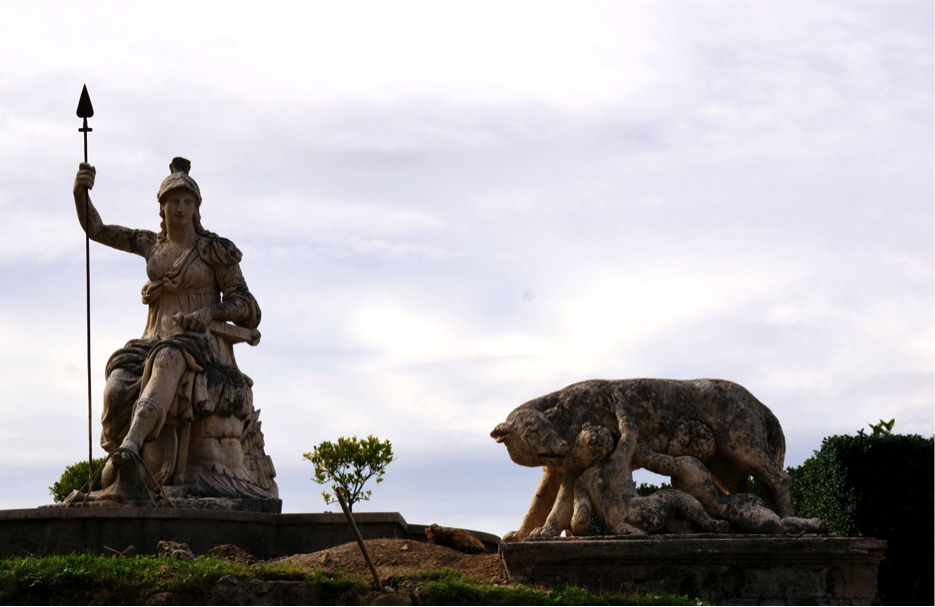

There are a lot of reasons why people love Italy. Fantastic food, beautiful Mediterranean landscapes, an abundance of Classical and Renaissance architecture - all major tourist attractions in this historically-rich country. But there’s more to Italy than museums and piazzas. Many of the world’s most famous inventors, artists, and revolutionaries have called Italy home; some may have even inspired you to pursue your current course of study.
Read on to learn more about four famous Italians, and how their work changed the course of history and the world as we know it.
New World Explorer: John Cabot
We often think of Christopher Columbus as the sole discoverer of the Americas; however, Italy produced more than one visionary explorer. John Cabot, our university’s namesake and skilled 15th century navigator, had his own historic part to play in mapping out the New World.
Independently of Christopher Columbus, John Cabot postulated that one could sail westward to Asia - a theory that led to his discovery of Cape Breton and Newfoundland in 1497. This pioneering trip and another in 1498 laid the groundwork for future explorations of North America and Britain’s later claim on Canada.
Students who study abroad in Italy enjoy one of the modern-day benefits of John Cabot’s accomplishments - a continued tradition of cultural exchange and exploration between North Americans and Italians.

Rebel with a Cause: Galileo Galilei
History students know that today’s astronomers owe a lot to the revolutionary scientists of the 16th century. Italian physicist, philosopher, and engineer Galileo Galilei helped usher in the Age of Reason by theorizing several scientific - rather than religious - explanations for how our solar system operates. His improvements to the telescope and scientific experiments helped move Europe out of the Dark Ages while laying the groundwork for modern physics and astronomy.
Galileo was tried and arrested by the Catholic Church for his outspoken advocacy of Copernican heliocentrism—a theory that the earth moves around the sun, rather than sitting still at the center of the universe. A devout Catholic himself, Galileo struggled inwardly with his fight against the church. One famous anecdote even describes Galileo stomping the ground in frustration while muttering “Eppur si muove”—And yet it moves, referring to the Earth moving around the Sun. Three centuries after his death, the Church under Pope John Paul II officially recognized that Galileo was right, and he was credited as a hero of modern science.
The story of Galileo reminds present day students of the importance of inquiry and education - of questioning accepted belief systems, pursuing new knowledge, and striving toward self-improvement as a means of benefiting oneself and society at large. One might say that this is the main reason we pursue higher education. At JCU’s Guarini Campus, located on the grounds of the Italian National Academy of Sciences where Galileo was a member, you will actually walk in the footsteps of this great scientist!
Famed 19th Century Composer Giacomo Puccini
Giacomo Puccini is known as one of the greatest composers and opera writers in modern history. His most famous pieces include La Bohème, Madama Butterfly and the masterpiece Tosca, which is set in Rome. The popularity of his operas stemmed from their representation of real-world experiences, which helped audiences in Italy and around the world to connect with his work in personally meaningful ways. Puccini’s operas are still performed today to sold-out audiences world-wide.
Students attending university in Italy can take one of the many Tosca walking tours available in Rome to visit landmarks featured in the opera, such as the church of Sant’Andrea della Valle and Palazzo Farnese.

Italian “Renaissance Man” Leonardo da Vinci
Undoubtedly one of the most famous Italians of all time, Leonardo da Vinci is the original “Renaissance man.” Although he came from humble peasant beginnings, Leonardo took on an apprenticeship in his teens and began an incredibly prolific and diverse career. He was many things at once: mathematician, painter, musician, inventor, engineer, writer, botanist - the list goes on.
Leonardo proves that curiosity, imagination, and learning need not be confined to any particular discipline, and the human mind has virtually limitless capacity for new experiences and growth. What an inspiring message for undergraduates who study abroad in Rome and engage in their own journey of personal, cultural, and intellectual discovery.
Want to see some of Leonardo’s creations in person? Students can witness some of his famous works at the Vatican Museums, including the famous unfinished 1482 painting, St. Jerome in the Wilderness.
Who is your favorite famous Italian?




